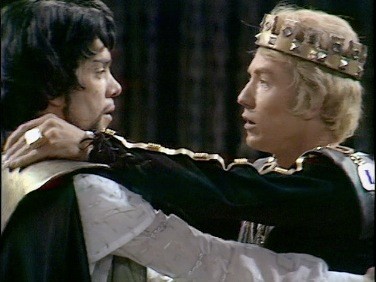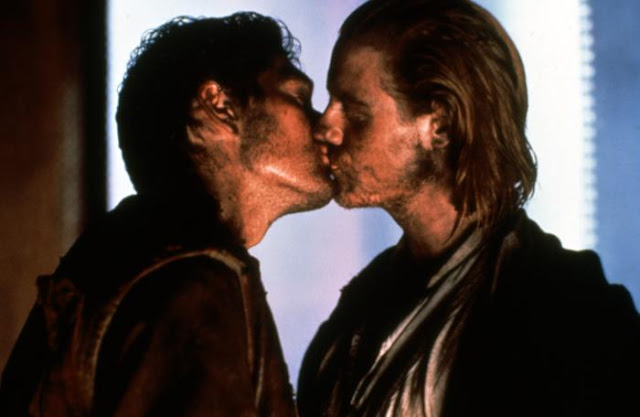I spent a week in Scarborough recently visiting my close relative Henry Bell and one day we climbed up to the impressive remains of Scarborough Castle that still sit on the hill top over-looking Scarborough town and the North Sea.
Now Henry wasn’t the first Henry to visit this place because the first Henry here was the man who ordered it to be built. The first Henry here was King Henry II of England (1154-1189) who commissioned the stone castle here on the site of a wooden castle in 1157 when he moved to deprive over-powerful barons of their fortifications.
Scarborough Castle, strategically placed, became an important centre for the defence of Northern England against not just troublesome English barons but against the threat of invasion from the even more troublesome Scots and other enemies from across the water in mainland Europe. Henry II so valued his castle at Scarborough that he honoured the town itself making it a royal borough.
King Henry II’s keep, the defensive and main dwelling for the castle, is still standing and the remains can still show us how splendid it must have looked in its day.
Further fortifications and some more luxurious Medieval apartments were added by his son, the notorious King John (1199 – 1216) who had also had problems with rebellious subjects like Robin Hood who, if he actually existed, was typical of the disappointed supporters of John’s warrior brother Richard I (1189-1199), the Lionheart, who had always been much to busy doing chivalrous things abroad with his loyal follower the devoted wandering minstrel Blondel to worry about such boring things as strengthening his castles at home.
John’s son was another Henry, named, rather unimaginatively, King Henry III (1216-1272) who shared his father’s interest in Scarborough and spent large amounts of money on the fortification and built the two towered barbican gate.
This was Scarborough’s heyday when it was a famous international centre, prosperous through trade encouraged by its annual Scarborough Fair.
After the old king’s death, King Henry’s III’s throne was passed to his son King Edward I (1272-1307) who held the royal court here in 1275 and 1307.
Edward I also used the castle as a prison for all his Welsh prisoners after conquering Wales and bringing it under English rule.
His son, King Edward II (1307-1327) was made the first Prince of Wales, the title held ever since by the heir to the throne. He too recognised the place as a sturdy stronghold so he used it to imprison some of his Scottish enemies after the Scots attacked Scarborough in 1318.
Before that he had given the castle to his unpopular “favourite” and lover, the French knight, Piers Gaveston (c.1284 – 1312), once reigning regent of England, who came to live here thinking himself safe when King Edward’s detractors started to hunt him down.
When his enemies finally caught up with him, Piers Gaveston was safe enough behind the fortified walls in this the first and most famous siege of Scarborough Castle (1312). Unfortunately for Piers, he ran out of food and had to surrender so a group of noblemen who promised him a safe passage back to London and his protector the king but instead handed him over the Earl of Warwick or organized a trial of his piers and condemned Gaveston to death and summarily executed him at Blacklow Hill.
Interestingly, for all Scarborough no nonsense sensibilities, the love story of King Edward II and Piers Gaveston has been it’s most consistent gift to the arts. King Edward II’s love for Piers Gaveston, whether they were lovers or not, has been immortalised in plays by Christopher Marlowe (Edward II, 1593) and Berthold Brecht (Edward II, 1923), a film by Derek Jarman (Edward II, 1991) and a ballet by Derek Bintley (Edward II, 1995).
Edward II by Christopher Marlowe
Act the Second Scene IV
[Near Tynemouth Castle]
Enter KING EDWARD and Young SPENCER
K. Edw. O tell me, Spencer, where is Gaveston?
Spen. I fear he is slain, my gracious lord.
K. Edw. No, here he comes; now let them spoil and kill.
[Enter QUEEN ISABELLA, KING EDWARD’S Niece, GAVESTON, and Nobles]
Fly, fly, my lords, the earls have got the hold;
Take shipping and away to Scarborough;
Spencer and I will post away by land.
Gav. O stay, my lord, they will not injure you.
K. Edw. I will not trust them; Gaveston, away!
Gav. Farewell, my lord.
K. Edw. Lady, farewell.
Niece. Farewell, sweet uncle, till we meet again.
K. Edw. Farewell, sweet Gaveston; and farewell, niece.
Q. Isab. No farewell to poor Isabel thy queen?
K. Edw. Yes, yes, for Mortimer, your lover’s sake.
[Exeunt all but QUEEN ISABELLA.]
I wonder what Edward II’s son, King Edward III (1327 – 1377) would’ve have made of all this. When he inherited the throne, he concentrated on on rebuilding Scarborough’s battlements and reinforcing the barbican. We can all be grateful though to his father, whose sad life and unpleasant death has inspired some challenging additions to World culture and which also marked Scarborough’s first appearance in the theatre.
From then on, through the Hundred Years War and the Wars of the Roses, Scarborough Castle led a surprizingly sober life in spite of the importance of Yorkshire to the conflict between the royal houses of Lancaster and York.
The victor, Henry Tudor, became King Henry VII (1485 – 1509) and his son, King Henry VIII (1509 – 1547) may never have visited Scarborough but his army certainly did when it defended the castle during the Catholic rebellion that threatened the throne in the so-called Pilgrimage of Grace (1536). An easier rebellion was quashed during Queen Mary I’s reign (1553-1558), when one Thomas Stafford, a Protestant rebel, arrived in Scarborough from Dieppe with thirty men in 1557 and walked into the castle claiming that it was going to be given to Spain by “Bloody Mary” herself. Stafford managed to hold on to the castle for three days before he was captured by the Earl of Westmoreland and beheaded in the Tower of London a month later.
Before leaving the castle, let’s hear it one more time from King Edward II and Piers Gaveston as imagined by Christopher Marlowe’s fevered brain. Here is an except from that 1970 BBC production with Ian Mckellen and James Laurenson as the doomed lovers:
























